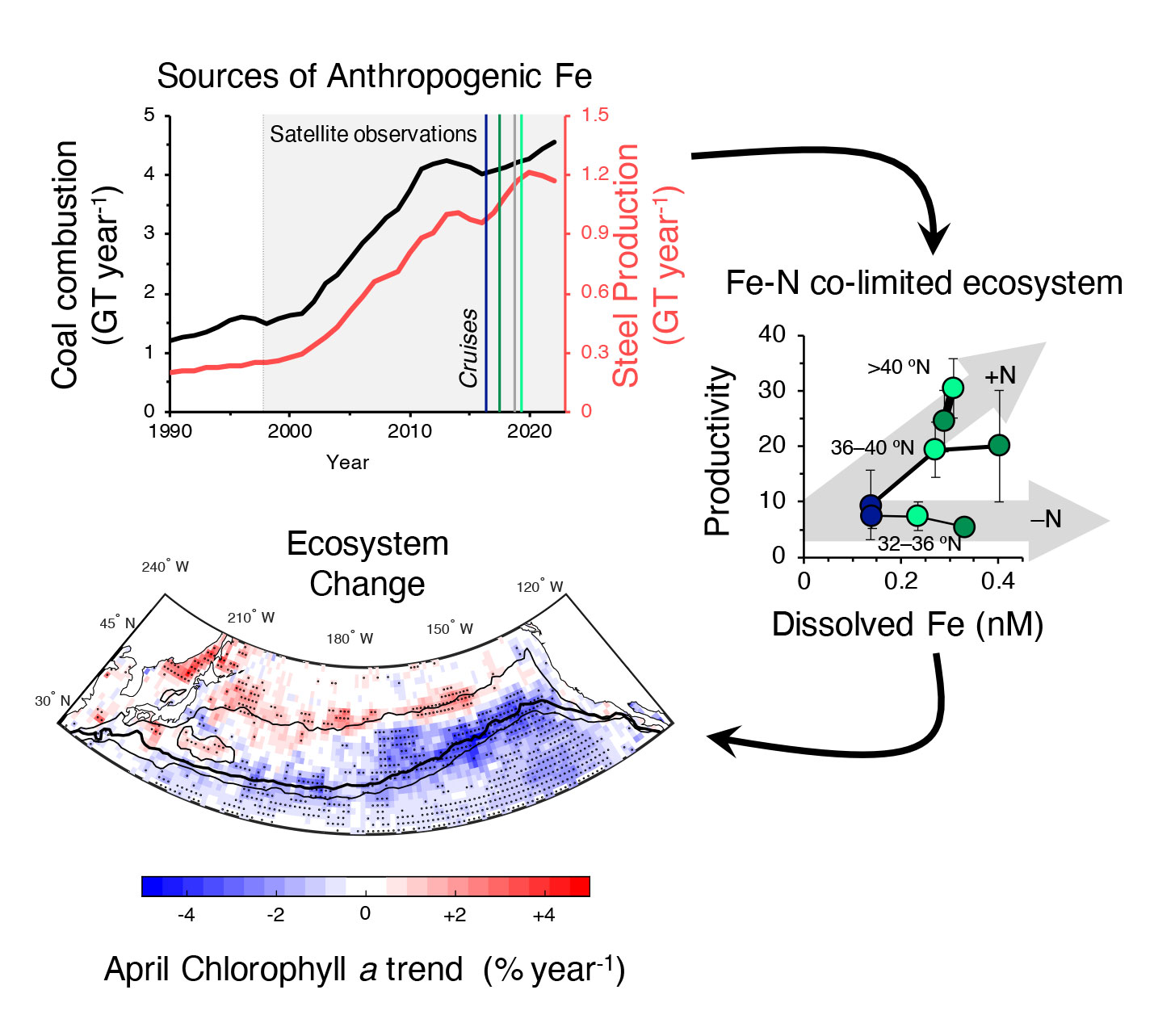Anthropogenic iron impact on the surface productivity in the Pacific Transition Zone
Industrial emissions now add to the natural iron (Fe) supply, but ecosystem impacts from anthropogenic iron input have not yet been demonstrated. Hawco and his colleagues (2025, see reference below) tackled this issue by combining iron concentration and isotopic composition measurements across 4 North Pacific cruises over 4 years, including GEOTRACES section GP15. Light Fe isotopic composition demonstrate that industrial activities have increased the supply of iron to the North Pacific Transition Zone, a highly productive region between 30 – 45 °N, which the authors estimate to be 39 ± 9 % of the annual ocean iron budget in the surface mixed layer. Authors also show that the Transition Zone ecosystem is co-limited by both iron and nitrogen, meaning that the excess of iron accelerates the seasonal drawdown of nitrate delivered by winter mixing. This effect can explain regional trends in satellite ocean color, which show a shorter spring bloom period and an earlier arrival of oligotrophic conditions in summer. Anthropogenic iron supply may act in concert with climate change to shift ecosystem boundaries farther north.

Reference:
Hawco, N. J., Conway, T. M., Coesel, S. N., Barone, B., Seelen, E. A., Yang, S.-C., Bundy, R. M., Pinedo-Gonzalez, P., Bian, X., Sieber, M., Lanning, N. T., Fitzsimmons, J. N., Foreman, R. K., König, D., Groussman, M. J., Allen, J. G., Juranek, L. W., White, A. E., Karl, D. M., Armbrust, E. V., & John, S. G. (2025). Anthropogenic iron alters the spring phytoplankton bloom in the North Pacific transition zone. Proceedings of the National Academy of Sciences, 122. doi:10.1073/pnas.2418201122
